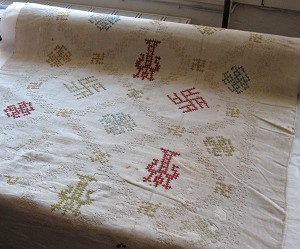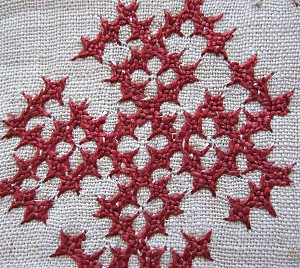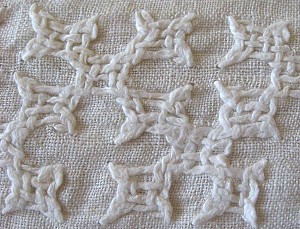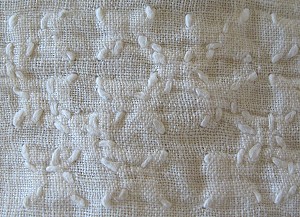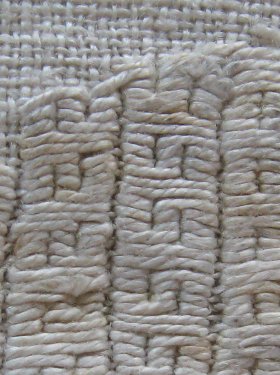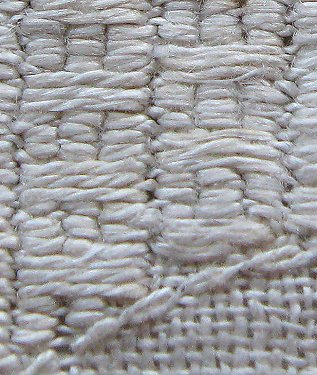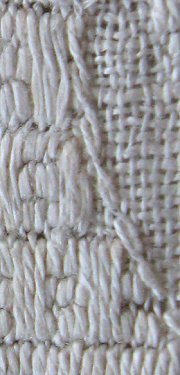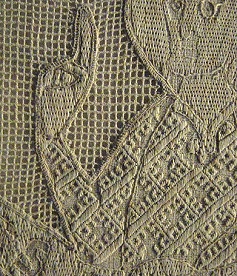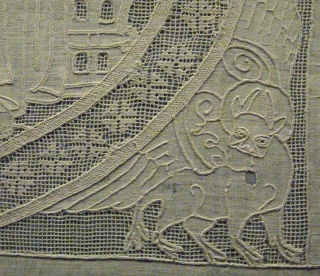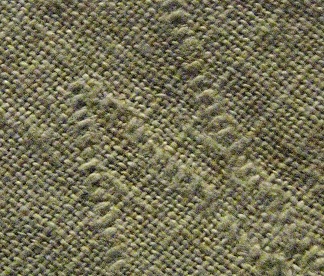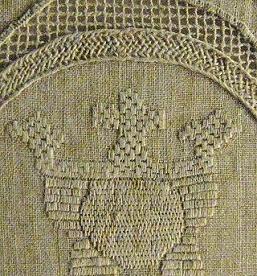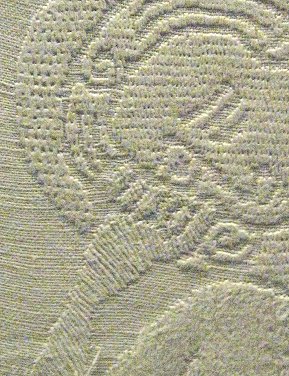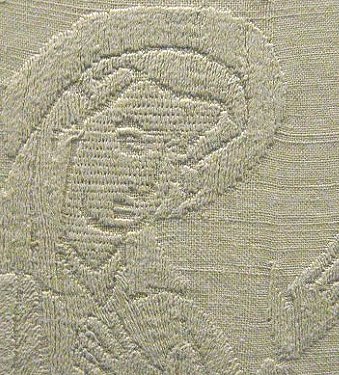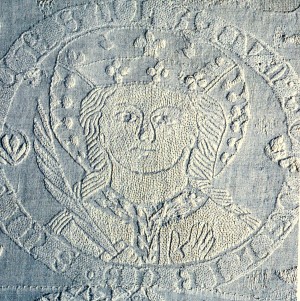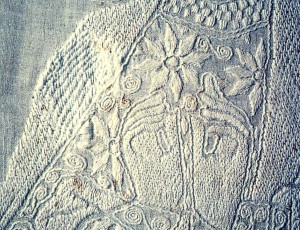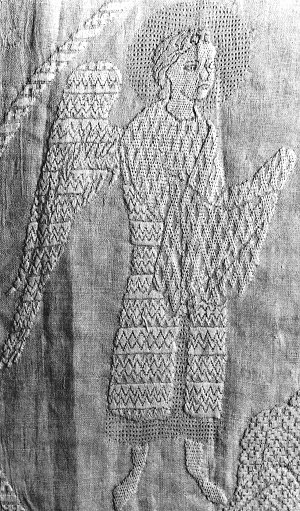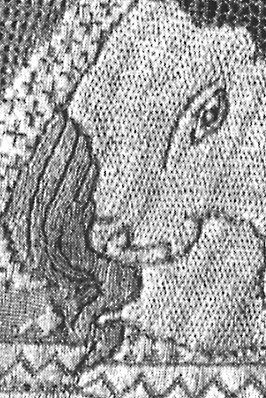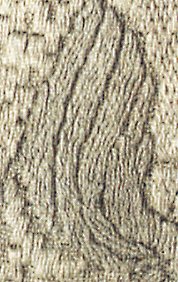| |
by Aldith Angharad St. George
Whitework is
a general term for embroidery worked on white linen
fabric with a white (usually linen) thread. There are
many forms and styles of Whitework. Some forms use
texture for effect, such as counted brick stitch or satin
stitch work, and can be strictly classified as
embroidery. Other forms rely on open spaces made in the
fabric for their effect, such as pulled-thread and
especially drawn-thread work. These forms of whitework
lead to the needle laces of the 16th century. Whitework
can also include outlines and details worked with a
black, brown or dark blue thread of wool or silk.
Whitework was most typically worked on altar and table
linens from about the 12th century. The earliest and most
numerous examples that have come down to us are from
Germany, where it was used for altar coverings,
particularly for use during Lent. It is for this reason
that whitework was frequently referred to in church
records as Opus Teutonicum ("German
Work"). However, there is a 12th century whitework
altar cloth from North Italy (Lombardy) that is worked in
stem and broad chain stitches, so whitework shouldn't be
thought of as exclusively German.
By the 14th century, whitework becomes more common in
North Italian and Scandanavian altar linens, probably as
a consequence of these countries' proximity to Germany.
However, it is surprising that there seem to be far
fewer, if any, examples of English, Flemish or Spanish
whitework until the 16th century.
It's been suggested by more than one writer that the
reason that so much whitework is concentrated in German
convents is that these convents were so poor that they
couldn't afford silk and gold threads for their
embroideries, so the nuns used the ravellings of linen
cloth for embroidery thread.
|
|
I think that while this may have been true in
the beginning, a taste for the austere beauty of
white-on-white, especially on a semitransparent ground,
developed very quickly, with the result that whitework
became a sought-after style in much the same way as Opus
Anglicanum. Certainly, whitework is just as
challenging to stitch as silk or metal thread work.
By the 14th century, suspiciously secular designs began
to appear in South German and Swiss whitework, which may
be an indication that these pieces were worked by
domestic, or even professional, embroiderers. Some are
likely to been used for secular purposes before being
donated to the church. During the 15th and 16th
centuries, such secular work becomes commonplace, and is
used not only for table linens, towels and curtains, but
also on some items of clothing.
Regrettably, I haven't found any solid evidence so far
for whitework being used on secular clothing until the
third quarter of the 15th century, when examples of
white-work on the increasingly visible edges of shirts
and chemises begin to appear in Germany, Italy and Spain.
During the first half of the 16th century, the major
forms of whitework (drawn-thread, pulled thread,
insertion stitches, counted stitches such as satin and
brick stitches) were all used to decorate personal linens
more and more frequently, and this leads directly to the
development of needle laces. (http://www.bayrose.org/wkneedle/Articles/Whitework.html)
Literatur:
Kroos, Renate und Jeitner, Christa-Maria: Das
Brandenburger Hungertuch, Brandenburg 2001
Bertone, Maria Beatrice, il velo della Beata Benvenuta
Bojani, in: filoforme, Autunno 2001, p. 3.
Publikation
zum mittelalterl. Flechtstich
von Frau Buggenthin |
